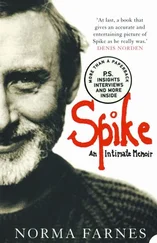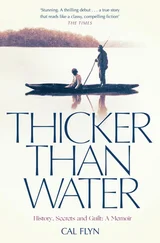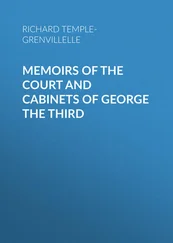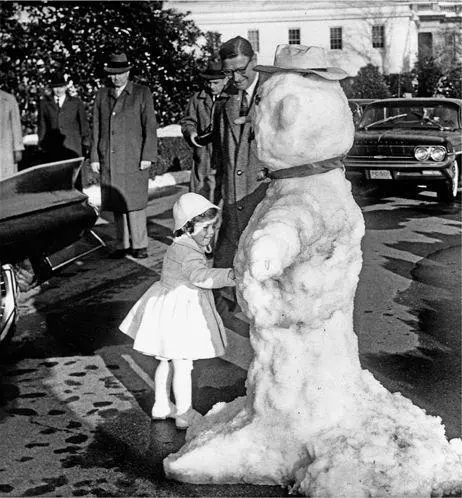
After a brief meeting with Agent Jeffries about the schedule for the upcoming week, I drove the six miles to my two-bedroom apartment in Alexandria, Virginia, for my own reunion with my wife and son. This was the longest I’d been away from home, and the transition was not easy. My wife’s perspective was that I had been on vacation in Palm Beach for two months, while she had been handling everything—paying the bills, maintaining the house, taking care of our very active four-year-old son—completely on her own. I knew it was rough on her, as it was on all the agents’ wives, and I did my best to empathize, but also explain that this was just part of the job. Unfortunately my suntanned face and arms didn’t help my case. I tried to reassure her that now that the Kennedys had moved into the White House, we would get into a routine, and presumably, I would be home more. What I didn’t realize was that Mrs. Kennedy was already planning to be away from Washington as much as possible. And where Mrs. Kennedy went, I went.
Six days later, I was en route to Middleburg, Virginia.
MIDDLEBURG IS ONLY about forty-two miles from Washington, and typically an easy drive, but the consistently bad weather had left the country roads nearly impassable because of the six- to eight-foot banks of snow along the plowed roadways. Thus it was decided that Mrs. Kennedy’s first trip to Glen Ora should be by helicopter. As Agent Jeffries was the lead agent on Mrs. Kennedy’s detail, he rode in the chopper with Mrs. Kennedy and Caroline, while I drove a Secret Service Mercury to be there waiting when they arrived.
The entrance to Glen Ora was marked by two simple stone pillars on either side of the driveway that looked like they’d been there since the Revolutionary War. The left pillar had a stone block engraved R. F. TARTIERE and the right, GLEN ORA FARM. You couldn’t see the house or any other buildings from the main road, and if it weren’t for the brand-new guard shack that had been erected at the entrance, you wouldn’t take a second glance at the place.
The three-quarter-mile dirt driveway had been cleared for our arrival, but like the rest of the roads, the snow was piled so high on both sides that the approach to the residence felt like you were driving through a tunnel.
The unpretentious eighteenth-century stucco and brick main house was painted a golden yellow with creamy white shutters and trim, and had numerous chimneys sticking out of the gray slate roof. Even though the residence contained six bedrooms, five bathrooms, a kitchen, dining room, and library, it wasn’t overly large, and was, in my opinion, not nearly as luxurious as the residence at Camp David.
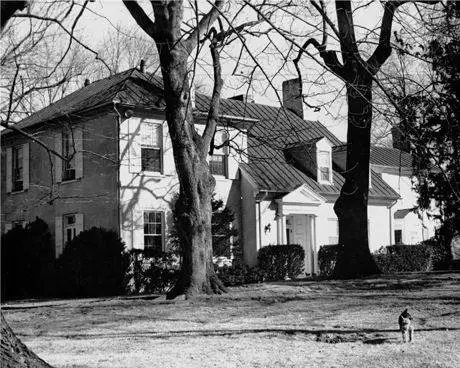
Glen Ora residence, Middleburg, Virginia
The White House Army Signal Agency (WHASA) provided the communication for the Secret Service as well as for the president. They brought in a trailer and placed it near the stables where we had established our Secret Service Command Post. Inside the trailer, they set up a telephone switchboard that had the capability of connecting to any telephone in the world. It also provided secure typewritten messaging and radio communication. Although our person-to-person communication was limited due to the size and weight of equipment available in those days, our car-to-car and car-to-base radio communication was excellent. All provided by WHASA.
Another issue was how to handle the press. The isolation and quaintness of Middleburg that Mrs. Kennedy found so appealing was not at all desirable to the White House press corps. The only lodging near Glen Ora was the Red Fox Inn, a historic tavern that dates back to 1728, and it had a limited number of rooms available, which meant that the reporters were forced to share twin-bedded rooms—something they weren’t used to and weren’t happy about. WHASA worked with the local telephone company to install additional telephone lines at the inn, while Western Union provided the necessary lines for the reporters to file their stories. But beyond the limited communications and lodging, for the young and social press corps, Middleburg was just plain boring. It was small, rural, and quiet. Nightlife was nonexistent. Outside of monitoring the infrequent comings and goings of the Kennedys and their visitors, there was nothing to do, and nowhere else to go. The press hated Middleburg.
The rooms at the Red Fox Inn ran fourteen dollars per night, which was way too expensive for the Secret Service agents, so we commuted. Every day Mrs. Kennedy was in Middleburg, I drove back and forth on U.S. Route 50 between my home in Arlington and Glen Ora. The fifty-mile drive simply added to the length of my workday. Up bright and early for the one-hour drive. Home late—well after dinnertime—tired and hungry. The lightly graveled dirt roads became a quagmire of mud and slush, freezing as hard as stone at night, and during the daytime, sloppy and soft, as the sun melted the snow, leaving huge puddles of water in every low spot in the terrain. Helicopter was the preferred means of transportation, but only the president, first family, and high-ranking government officials or official guests qualified. Those of us who drove just did the best we could not to get stuck. Because I was the second man on the detail I worked weekends, while Jeffries took Saturdays and Sundays off. This meant that I spent a lot of time in Middleburg, along with the children’s agents, Bob Foster and Lynn Meredith.
Both Bob Foster and Lynn Meredith were great guys—and the three of us got along famously. We were all three about the same age, married, and had young children. Foster was a proud and staunchly loyal Ohio State graduate who had a wonderful sense of humor. Lynn Meredith was an accomplished pianist who had an endless repertoire of upbeat songs that ranged from ragtime to jazz to anything modern. Anytime there was a piano around, he would sit down and have everybody singing in no time. John was still an infant at this time, but Caroline adored both Mr. Meredith and Mr. Foster.
All the reporters knew who I was by this time, and that I was assigned to Mrs. Kennedy, so whenever I went into the little town of Middleburg, word would get around and suddenly I’d be surrounded: “Clint, where is Mrs. Kennedy?” “Does she have any plans to leave the estate?” “What on earth does she do all day?”
I tried to be as friendly and respectful as I could without providing any of the information they were seeking. In fact, Mrs. Kennedy was usually doing what she loved—spending time with her children and riding, and always trying to keep out of the public eye.
When I had done my research on Mrs. Kennedy I learned that she was an accomplished horseback rider. She had ridden in competitions since early childhood, and now that she had rented this place in the Virginia hunt country, it was clear that she planned to ride more frequently for sport and relaxation. This was a bit of a problem for the Secret Service because we were responsible for protecting her—and nobody on the White House Detail was as skilled a rider as the first lady.
She boarded her horse, a bay gelding named Bit of Irish, at the nearby farm of her good friends Eve and Paul Fout. The Fouts would bring the horse by trailer to Glen Ora so she could ride him as she pleased when she was in residence there. The Fouts were also members of the Orange County Hunt Club, which had extended an invitation for Mrs. Kennedy to join.
When I first heard her talk about “riding the hunt” I envisioned a group of friends trotting on their horses across the rolling hills of the fenced estates, stopping for tea and crumpets after an hour or so. There was talk at Secret Service headquarters of sending me and a couple of other agents to riding school so that we could adequately protect Mrs. Kennedy on these outings. It soon became clear, however, that that was not a feasible option.
Читать дальше







